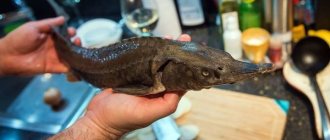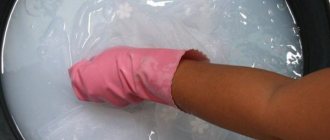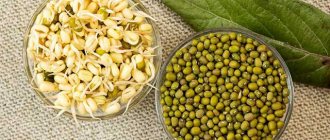Sturgeon, sterlet, stellate sturgeon, and beluga belong to the sturgeon family. A distinctive feature of the variety is the presence of viziga. It is a chord, made of dense, soft tissue, looks like a cord, consists of connective tissue and cartilaginous parts. Traditionally used for preparing various dishes - pies and kulebyak. Today, due to the abundance of fish varieties and semi-finished products, viziga is often disposed of as waste along with the entrails and gills. Housewives should know whether the sterlet vizig is poisonous or not. It can be eaten, it is rich in vitamins A, C, group B, minerals - calcium, phosphorus, sodium. The chord of sturgeon fish is not poisonous, but it spoils much earlier, therefore the shelf life of a fresh product or ready-made dish is reduced.
Cleaned sterlet
Where to look?
As mentioned earlier, viziga is found in those fish that belong to the sturgeon family. These are, first of all, sterlet, stellate sturgeon, beluga, kaluga, and thorn. The fish of this family are quite large. For example, the beluga reaches 4 meters in length.
Sturgeons belong to the subclass of cartilaginous ganoids. They are freshwater or anadromous. They are distinguished by high fertility. Due to their special value, representatives of sturgeon are called “red fish”. Their meat, black caviar, bladder, and, in fact, viziga are of great commercial importance. We have already looked at what this is.
Sturgeon are caught in the Volga and Ural deltas, as well as in Iran. Special fish farming companies are becoming widespread around the world. Well, you can, of course, purchase representatives of sturgeon for your table at any grocery market or store.
How to remove the vizig?
So, fish is on the table. Now we have to cut it up. The process consists of several stages:
1. First of all, remove the mucus from the surface. To do this, heat the water and pour it over the fish. If the growths are hard, you can cut them off.
2. Remove the skin (if the cooking recipe requires it) according to the stocking principle. We hook it at the head and lead it to the tail.
3. Next, cut the belly and take out the caviar or milk. They can also be used for food. Both caviar and milk are valuable delicacies.
4. Remove the gallbladder carefully to prevent damage. Otherwise, the meat will acquire a bitter taste.
5. Remove all films from the abdomen and thoroughly wash the fish under running water.
6. Next, the stage of removing the sturgeon begins. What it is? This is an important point in cutting fish. First we make cuts at the tail and at the head. They should be deep enough to reach the white lace. For large fish you need to make several such holes. We pick up the chord with a fork, tweezers or pliers, and carefully remove the string, preventing it from breaking. We move from the tail to the head.
General concept
Viziga is a long chord that runs along the entire body of fish of the sturgeon family. In appearance it looks like a long white ribbon. It is quite difficult for the inexperienced eye to detect it, especially if the important process of cleaning the carcass occurs for the first time.
Vizigi filling with eggs for pie
Previously, viziga was successfully used to prepare various dishes; pies with such filling were considered a real holiday delicacy. Nowadays, this part of the sturgeon is most often thrown away, since there is an opinion that it has poisonous properties.
It would be correct to say that viziga is not poisonous, it just spoils much earlier than the fish carcass itself - cooked or still raw. Therefore, removing this skeletal layer extends the shelf life of the dish, which guarantees the absence of any harmful effects on the body.
How to simplify the process?
Faced with the need to remove a sterlet vizig, any housewife understands that this procedure is not an easy one. Is there any way I can make my life easier? Yes, if you first freeze the fish and then carry out the process of removing the chord. The peel will not be preserved, this should be kept in mind. But you can cook steaks, barbecue, and bake in the oven.
The purchased fish is washed for 20 minutes under running water, rinsed with boiling water, and put in the freezer for a couple of hours. Next, the process is similar to cutting unfrozen sterlet or any other sturgeon fish.
If the sturgeon is large, you should first pull off the fin on the chest and use a knife to cut holes throughout the entire carcass, reaching the cartilage. Then remove the head, remove the bugs on the back and fins. Make a cut at the tail and pull out the chord with a knife or fork. You can cut the belly and, after removing all the entrails and washing the fish, then remove the vizig.
For fresh large fish, the layering method is used. To do this, the carcass is cut into two halves along the back (flat). In this case, the chord is very easy to get out undamaged, with a whole cord.
Basic cleaning rules
After removing the scales and head from the fish, it is necessary to remove the chord. How to do this correctly, quickly and easily?
It is best to remove the viziga with a sharp knife. To do this, an incision is made near the tail of the prepared carcass. You need to cut in a circle, cutting through the skin and meat layer all the way to the so-called spine.
Be sure to ensure that you do not damage the chord along with the meat - this will make it difficult to remove, it will simply break at the most inopportune moment. A little trick - you don’t need to pull the squealer right away; it’s better to wrap the tail fin in one direction several times.
To get the vizig you need to cut the fish along the ridge
After such procedures, just gently but firmly pull the tail - the chord will be completely removed without difficulty. All that remains is to thoroughly rinse the fish, remove the fins, and then cut the carcass into wonderful steaks.
How to cook?
In ancient times, pies with vizig were popular in Rus'. To prepare them, the chord is washed and boiled in herbs and spices for about four hours over low heat. Then roll into minced meat, add onion, bay leaf, boiled rice and hard-boiled eggs, salt and pepper. The filling is used in the preparation of pies, adding to them for taste a little broth, where the chord was cooked.
In addition to pies with vizig, you can prepare a lot of original dishes from the chord. For example, Fyodor Chaliapin was very fond of the appetizer of viziga with horseradish.
To bring the idea to life you will need 300 grams of vizigi (3 chords), 50 grams of dry white wine, two eggs, 4 salted gherkins, two tbsp. l. sour cream, 1 tsp. mustard, dill, tarragon.
To prepare it, the removed vizig is soaked in salt water for 4 hours. Then roll over the minced meat, adding herbs to taste. Dill and tarragon are excellent. Add a little white wine and simmer covered. Then mixed with finely chopped pickles, grated boiled egg, sour cream and horseradish. The snack is ready!
So, we looked at what viziga is, what its value is and how to use it for food.
Source of the article: https://fb.ru/article/433307/chto-takoe-viziga-kak-ee-udalit-iz-ryibyi
Calorie content 28kcal
Energy value of the product (Ratio of proteins, fats, carbohydrates):
Proteins: 1.2g. (∼4.8 kcal)
Fat: 0.1g. (∼0.9 kcal)
Carbohydrates: 6g. (∼24 kcal)
Energy ratio (b|w|y): 17% | 3% | 85%
How to clean and cut up sterlet
Primary processing is approximately the same: we clean it from mucus, gut it from the insides and rinse it with running water. Further processing features depend on the recipe. For example, if we plan to bake fish and then remove the skin from it, then the so-called bugs do not need to be removed. If the recipe calls for serving with skin, then the bugs must be carefully cut off.
Sterlet is most often prepared whole or in large pieces; it is very rarely cut into clean fillets. In professional kitchens, during processing, this fish is doused with boiling water and immediately immersed in cold water. This makes it easier to clean out the back and side bugs, and easier to remove the mucus. But this procedure requires care so as not to cook the fish, but only lightly steam the skin.
Possible dangers
At the same time, frequent consumption of sterlet is not suitable for people with pancreatic diseases or disorders of the adrenal glands
It's also important to remember that fish is one of those foods that, if cooked incorrectly, can cause serious problems. Raw fillet (or poorly cooked) is a breeding ground for many dangerous bacteria
In addition, it is advisable to avoid carcasses smoked using so-called liquid smoke. Because the use of this product already indicates that the fish was specially prepared after it had spoiled. This product contains excessive amounts of sodium, which can cause swelling. But that's not all.
How to wash
Some people confuse washing and scalding with boiling water for cleaning. How to wash the sterlet depends on whether we scald it. If scalding is not planned, then it is better to immediately clean off the mucus properly. Thoroughly clean and rinse each area of skin with plenty of water to completely remove all mucus. Before scalding, such a thorough rinsing is not required; all the mucus will come off during further cleaning.
How to remove mucus
There are several ways to remove mucus. They depend on the conditions and equipment of your kitchen. Here are the main ways:
- Hard brush
- Metal sponge
- Coarse table salt
- scalding
The most accessible and simplest is to rub the fish with salt, it will absorb the mucus. Afterwards, simply rinse with water. When using a stiff brush or steel wool, be careful not to damage the skin. If further scalding with boiling water is planned, the mucus is not removed so thoroughly, because it will come off later anyway.
It is advisable to thoroughly rinse the fish under running water after any method of removing mucus.
The mucus itself is not harmful, but it greatly interferes with further processing of the sterlet. Because of the mucus, the fish slides on the board and is inconvenient to cut. An inexperienced person may even get hurt because of this.
What to do if there are parasites in fish
If you find parasites in fish, you should not eat it under any circumstances.
But if there is only a suspicion of infection and you still plan to cook something from fish, you must follow the following rules:
- Both parasites and their larvae die under the influence of high temperature. You need to boil or fry the fish for at least twenty minutes; if you choose the oven cooking method, then this is at least half an hour.
- You can get rid of parasites by salting the fish, but this takes a lot of time - up to two weeks.
- Parasites also die in frozen fish; at a temperature of minus thirty degrees, just six hours is enough.
Small red worms can often be found in fish, but experts say they are safe. Despite this, there is no need to neglect the rules of heat treatment.
How to clean at home
First of all, decide on the recipe to understand whether you need to clean the sterlet. For example, for planing, you can remove the skin directly from frozen fish. To bake whole with skin, or to fry in large pieces, you will have to cut off the bugs. For fish soup, you can leave the bugs and carefully remove them after cooking. There is no single correct way to clean sterlet; it all depends on the specific recipe. Therefore, we will consider the most popular methods from simple to complex:
- Cleaning sterlet for planing.
- Cleaning for fish soup or boiling.
- Cleaning for baking whole or in large pieces.
- Cleaning for filleting.
With stroganina, everything is simple - we remove the skin directly from frozen fish. For fish soup or boiled fish, simply remove the entrails and mucus. And bugs and skin are easier to remove after boiling.
To bake the bugs entirely, you will have to remove the bugs, either by cutting them off with a knife, or by pouring boiling water over them and carefully peeling them off. The second option produces a more beautiful sterlet, which is why it is more often used in professional kitchens. At home, you can simply cut off the bugs with a sharp knife from the back and sides.
How to cut
Before cutting the sterlet, prepare a board and a sharp knife. It is advisable to place a rag under the board so that it does not move around the table. Cutting is not much different from cutting regular fish, but there are a few nuances.
Most often, they try to cook sterlet whole, because the appearance of a whole fish is one of its advantages. For this method, the fish is cleaned of mucus and bugs and the vizig is removed so that there is no deformation during cooking. You also need to remove the gills, especially if the fish is poached or boiled in liquid.
Cutting sterlet before cooking
If you plan to fry or bake in large pieces, then simply cut the fish crosswise into pieces of the desired size. Sterlet is rarely cut into pure fillets; to do this, it is cut along the vertebral chord and cut into portioned pieces.
It is best not to cut frozen fish; it is only suitable for planing. For other dishes, place the frozen fish in a regular refrigerator before cutting to allow it to gradually cool down.
Features of the effect on the human body, benefits, harm
Sterlet is very useful for adults because it contains a lot of calcium. It stimulates mental activity, improves the condition of hair, skin, and nails. If you have frequent mood swings, nervous disorders, or pathologies of the digestive system, you should try to include this product in your weekly menu more often.
Pregnant women and nursing mothers are allowed to eat fish, but with caution, as it can cause allergic reactions. The product, rich in protein and fatty acids, strengthens the bone and nervous systems, improves mood, and relieves depression.
This fish can be given to children from the age of one, preferably baked. Soufflés are often made from it, but you can offer the dish to kids in pieces so that they can chew them on their own.
The product is rich in calcium, necessary for normal skeletal development.
Elderly people should eat sterlet more often, because it:
The absence of carbohydrates and zero glycemic index allow diabetics to include it in their diet. A large amount of proteins normalizes insulin production.
How to gut
To gut a sterlet, use a sharp knife to make an incision along the belly from the tail to the head. Then carefully pull out all the insides, being careful not to damage the gall sac. If bile does leak, the area should be thoroughly rinsed.
Gutting a sterlet fish
We remove the gills from the inside, trim them with a sharp knife and then pull them out.
If the gills are not removed, they will add bitterness to the finished dish.
It is especially important to remove the vizier from the sterlet.
Viziga
Along the back of sturgeons there is not a spine, but a chord, inside of which there is a vizier. If you do not remove it, then when preparing the vizig, the sterlet will begin to tighten and deform the entire fish. Outwardly, it looks like a thick translucent white rope. The structure of the visiga resembles cartilage. The taste is also similar to cartilage, only with a fishy aroma.
Do I need to remove the vizig?
Viziga itself is edible and harmless; it is even used in food, for example, as part of pie fillings. The whole problem is that during heat treatment, the vizig begins to tighten and twists the entire fish. The appearance of the finished dish is spoiled; instead of a beautiful sterlet, we get a crooked and unappetizing one.
To determine whether you need to remove the vizig specifically in your recipe, see if it interferes. In field conditions, when cooking fish soup, it is easier to cut the sterlet into large pieces directly with the squeal, so as not to mess around with it too much. To cut fish into clean fillets, it also does not make sense to remove the visigu.
How to remove a vizig
Removing the vizigi will not do any harm in any case. Sometimes it may simply be useless, but it certainly won’t ruin the recipe. The scoundrel is located inside the vertebral chord; to remove it, you need to make an incision at the tail, carefully trim the outer part of the chord and slowly pull out the screech.
Viziga is a little slippery, so you can either pick it up with a knife, or dip your fingers in fine table salt so that it does not slip out.
What is elm and where can I get it? I really want pies with ellipse!
In order to eat pies with elm, you first need to get hold of sturgeon or catfish fish, since elm is a chord (an elastic longitudinal cord that replaces the spine) of sturgeon, sterlet, bester, stellate sturgeon, kaluga, beluga, thorn or catfish. After this, you need to cut off the head (it will be useful for preparing cabbage soup with head), make a circular cut around the tail and carefully pull out the string
However, you can remove it surgically, something like this
In any case, the elm must be removed from the sturgeon if you are preparing any formal dish from whole fish, otherwise the following result may occur
which will not only “ruin” your fish but can also scare the ignorant.
After extraction, the elm is dried in a draft, and when preparing the filling for pies and kulebyak, it is simply boiled and chopped into pieces.
First of all, let's figure out what this mysterious name is: elm (or, as it is often called, vizig).
Elm is the dorsal chord of sturgeon fish, which runs along the ridge.
In appearance it looks like an elastic flexible long ribbon, which is connective tissue.
To pull out the elmfish, a cut is made in the fish along the spine, the tape is hooked and pulled out.
You can buy ellipse in stores, but at a fairly high price.
When cooked, elm swells significantly. Next, it is finely chopped and used in recipes for making minced meat, kulebyak, solyanka, and filling for delicious pies (in the filling, kulebyak is usually mixed with chopped eggs and herbs).
Elm is a useful product because it contains a significant amount of antioxidants, vitamins (A, C, B) and trace elements (phosphorus, magnesium, molybdenum).
As for the calorie content of viziga, it is very small, about 28 kcal per 100 grams
Vyaziga.
Elm is nothing more than a chord, a dorsal string extracted from the spine of a fish, mainly sturgeon or salmon. Elm has the appearance of a long cord with rather dense vesicular cellular tissue. This is what she looks like...
And here are the elm pies. I haven’t tried it, but I can imagine how delicious it is.
Crap. I myself wanted pie with vyaziga. Maybe someone can share the recipe, and in principle where to get elm.
It seems like everyone has written about Elm. I saw the thick chord of a huge sturgeon, which lay diagonally in the refrigerated pantry of the cafe. And she herself extracted fresh sterlets from the fishermen on the shore. True, there is not much of it (in and zigs - that’s what they call it there) in sterlet, i.e. she's thin. We process it like intestines, squeezing out the contents from this elastic “tube” - a thick, slimy “substance”. We rinse very well to remove any remaining blood for a long time until it turns white. Then cut into pieces and cook, pouring cold water with spices, bay leaves, onions and salt, for a long time - about 4 hours over low heat. Turn on a large grill and add onion, fry. Add a chopped boiled egg, a little boiled rice, salt and pepper. We make small fishcakes - pies with a hole in the center (then we pour in a little broth in which the elm was cooked. Very tasty, the filling is dense when it cools (somewhat reminiscent of boiled pig skin, but the taste and smell is fishy).
Previously, frames for whips were made from ligature (whips - worn and snapped by dandies), and hunters also tied “Canadian” skis with them. Dried, often sprayed with water, elm is very elastic and durable.











